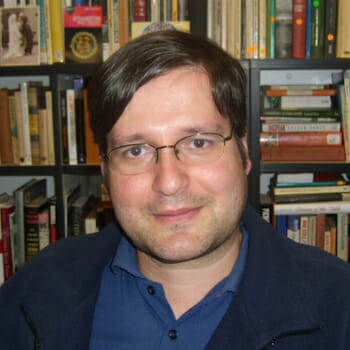
Media
Fake Arguments on Fake News
The constipated tedium that follows each call, denial, and condemnation after another round of fake news and its giddying effects has become daily fare. Entire episodes with the sanctimonious and the solemn are being created to show up the citizen journalist, the blogger, the self-opinionated masturbator of news, in the hope that some high priest set will reclaim the ground. That ground, supposedly, is “truth,” a truly big word merely assumed by its advocates.
None of this is to deny that there is something dreary and depressing about accounts that are fabricated. But this is an age-old matter, and one that centres on the old question: Should you trust what is ever published? The facility to use language is as much a means of expression as deception. According to George Steiner, humanity’s Babel dilemma – having a multiplicity of languages that seek to confuse rather than clarify – had as much to do with the need to deceive than anything else. Learn the language, learn the deception.
The modern attempt to evade such deceptions is conventional as much as it is flawed. It questions the very media that was meant to disseminate accounts at speed and attributes traditional monopolies of truth to a Fourth Estate long in tooth and very much on its sickbed. The New York Times, the Washington Post and the Financial Times have looked rather haggish at points.
There is a charmingly naïve assumption here: that the old press houses were somehow incapable of deception and censorship. The influence of media moguls; the cuts and modifications of the editorial boards and government censors, are all historically distant in such arguments. All that is Fake is new because – and here an element of snobbery creeps in – it is generated by the vox pops brigade.
That viral freight helped along by social media is being treated as the problem, the medium as dissimulated message. The Four Corners episode which aired on Australia’s national network on Monday is one such example, shrill in its concerns that the fake in news is undermining to democracy and its institutions. Its list of interviewed subjects supply us a Who’s Who of sceptics and critics about modern journalism and the dark steed called Fake News.
Claire Wardle, Executive director of First Draft, is one who earns her crust attacking this wave and engaged in the process she regards as “verification training for journalists.” Her organisation supplies “Training and resources for journalists in an age of disinformation.” In her interview with Four Corners, she suggests how “we need to worry about fake news. People dismiss it as frivolous. It’s not. I think it’s the biggest crisis that we face as humankind because it is dividing us. And as we’re divided we’re going to get to a point where democracy is no longer functioning.”
Such a considerable overegging of that pudding is supplemented by other comments. Veteran journalist John Carlin makes no secret of his aversion to social media platforms, and their means of getting the message through an intemperate scream rather than a sober debate. “What social media does is give more weight and more value to the people who shout loudest.” But years before the clans of shouters got into the social media bubble, the Murdoch empire, through such trusty emissaries as The Sun, were happy pushing voters with reactionary prods and embellished accounts.
Behind such comments on the fakery of social media news is a paternalistic sneer, one directed against the great unwashed. Sometimes, the sneer targets a specific group, the abominations, the gullible freaks, the marginalised. Phil Howard, director of the Computational Propaganda Project at Oxford, suggested in February last year that the condition for consuming and gorging the fake in news coverage is limited. “There is an upside to all of this. It appears that only one part of the political spectrum – the far right – is really the target for extremist, sensational and conspiratorial content. Over social media, moderates and centrists tend not to be as susceptible.”
That is all fine, if you treat terms such as “moderate” and “centrists” as fundamentally immutable and immune to the witch’s brew of conspiracy. All groups are susceptible, and the artery busting fury at WikiLeaks in exposing the underbelly of the Clinton campaign machine in 2016 all suggested that groups of any political persuasion are very happy to entertain dark pulls and urges. Julian Assange, the celebrated truth sayer one day; pilloried Russian agent the next.
Technological reach has also given birth to a vibrant form of citizen journalism, the very sort frowned upon by conventional, often regulated networks. In 2014, Time noted that “the growth of social media, facilitated by technological advances that allow Internet access even in a war zone, has made detailed, ground-level information on the war available online.” Such journalism is praised as fresh and fair when it seems to shed good light on a position; dark, bought and compromised when it does not. The term “fake” is as much tactical as anything else.
But press traditionalists remain wary: the global cutting back of the press corps has led to an increasing reliance on freelancing, leading to such fears as those of John Owen at City University in London: “news organisations can’t contract out their duty of care and moral responsibility if they choose to air or publish freelancers.”
The battle over what is the fake and authentic in news easily dovetails into regulations of control and limitations on expression. It emboldens the censor and the police version of history. Laws criminalising it have been passed in countries as diverse as Malaysia, France, Germany, and Russia. Some of this is being done with the connivance of the Fourth Estate, keen to accommodate the interests of state. Much information and content, as a result, is being inadvertently blocked.
Singapore’s own effort, the Protection from Online Falsehoods and Manipulation Act 2019, ostensibly targets electronic communications of false statements of facts, the use of online accounts to facilitate such communication and “enable measures to be taken to enhance transparency of online political advertisements, and for related matters.” It reads like a gentle, sanitised effort, but its implications are beastly, permitting ministerial determinations on what, exactly, fake news might be. Such laws, it follows, tend to be used with impunity, targeting any revelations and disclosures that might embarrass the state and its bumbling officials.
Sandra González-Bailón of the Annenberg School for Communication does make a sensible and cautionary point on such efforts. “The risk of governments regulating social media is that they will regulate something that we don’t fully understand.” Nor, for that matter, do they.
While the authenticity verifiers marshaled across platoons of fact-checkers might well be thinking they are doing us a service, nothing ever replaces the sceptical reader who covers multiple sources to identify an account and question it. Never just read lines, but between them; never just accept news, but monitor its content and those who produce it. To the informed sceptic go the spoils of enlightenment.
